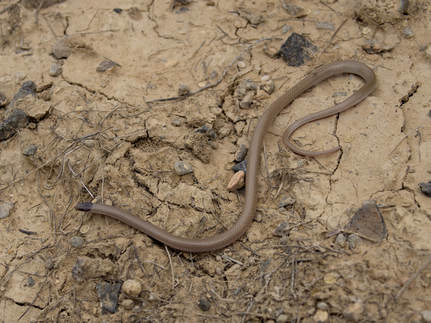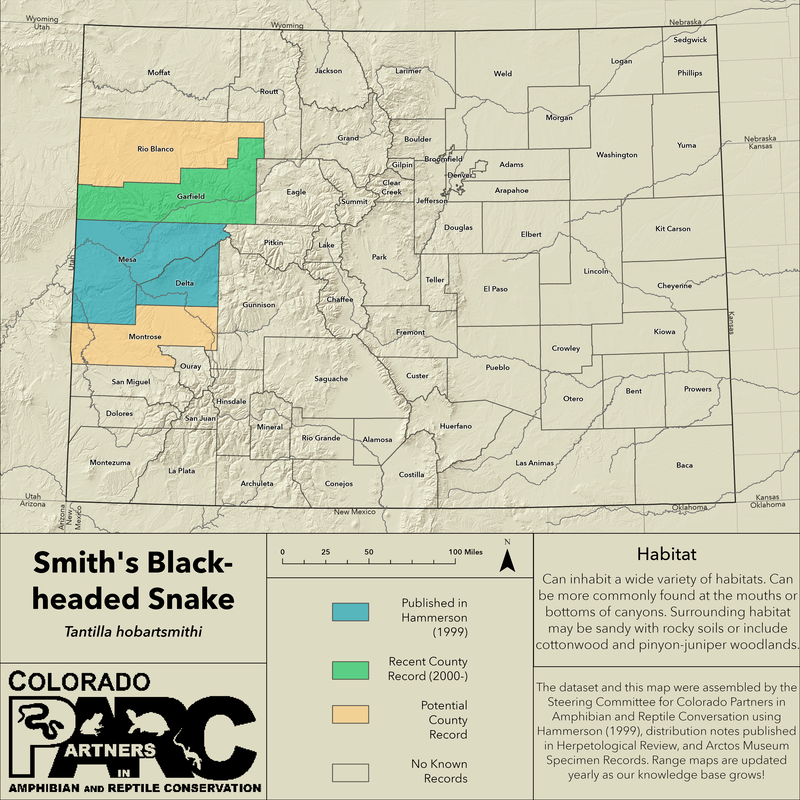|
Identification:
Distribution: This snake exists in west-central Colorado at elevations between 4,500-6,500 feet (1,370-1,980 m). Furthermore, this species potentially exists in northwestern and southwestern Colorado, but is yet to be discovered there. (Hammerson, 1999)
Activity: In Colorado, this species has been observed from May to August, though most occurrences occur in May and June. The Smith’s black-headed snake is nocturnal and can be found at dusk at temperatures between 59-77 degrees Fahrenheit (15-25 C). It is also possible to find these snakes under rocks after rainfall. (Hammerson 1999)
Conservation Status: Designated as a non-game species in Colorado. Generally uncommon in Colorado, known populations of the Smith’s black-headed snake appear to be stable. Given its secretive nature, there are likely more populations of this snake that remain undiscovered to this day (Hammerson, 1999).
NatureServe rank: G5 (Globally Secure), S2 (State Imperiled). |
Habitat: Smith’s black-headed snakes can inhabit a wide variety of habitats in western Colorado. Can be more commonly found at the mouths or bottoms of canyons. Surrounding habitat may be sandy with rocky soils and xerophytic shrubs or include cottonwood and pinyon-juniper woodlands. (Hammerson 1999)
Diet: This snake is known to prey on centipedes, millipedes, beetle larvae, and caterpillars (Hammerson, 1999). Smith’s black-headed snakes are known to use their rear fangs and toxic saliva to subdue prey. (Hammerson 1999)
Defense: Coming soon!
Natural Predators: Predators may include birds of prey, mammals, and even other snakes. Other possible predation may occur by a carnivorous animal that might find this snake while it is active at night. (Hammerson 1999)
|
Cited & Additional Resources
Hammerson G. A. 1999. Amphibians and Reptiles in Colorado. University Press Colorado, Boulder.
Hammerson G. A. 1999. Amphibians and Reptiles in Colorado. University Press Colorado, Boulder.
Account compiled by: Hayden Lewis
Reviewed by:
Last Updated: 1/28/2023 by Anthony Berardi
Reviewed by:
Last Updated: 1/28/2023 by Anthony Berardi



